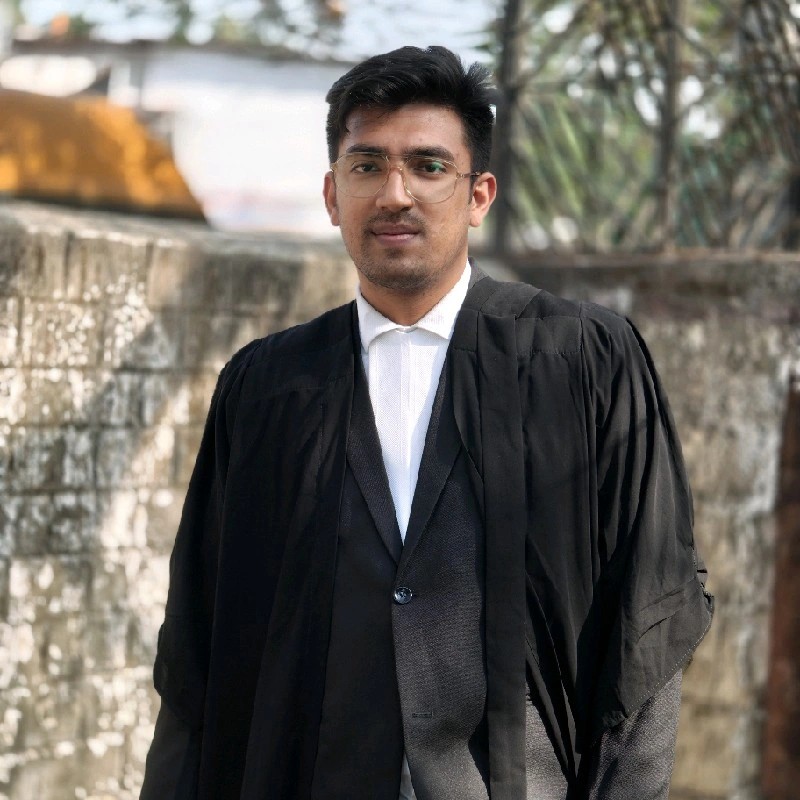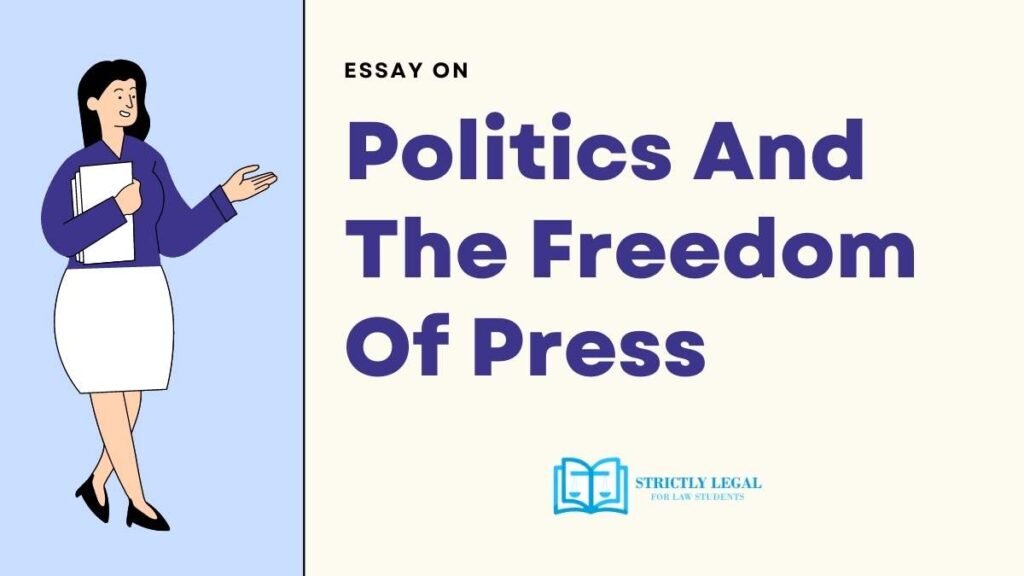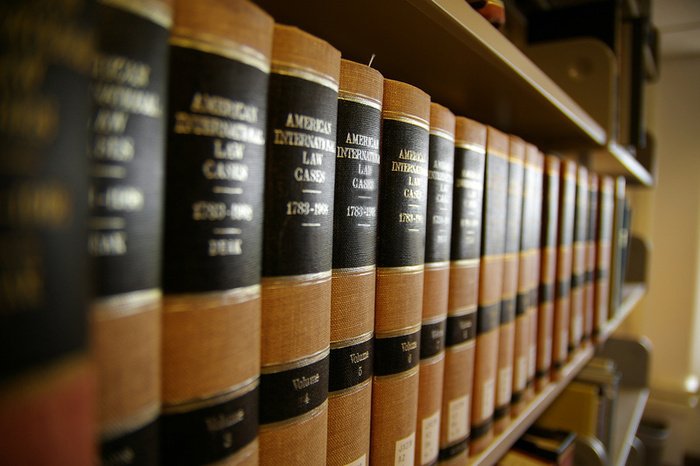What has the freedom of press and politics to do with each other?
The word “freedom of speech” is sometimes used interchangeably, although it refers to any act of seeking, receiving, and transmitting information or ideas, independent of media. In actuality, no country’s right to freedom of expression is absolute, and it is frequently limited by laws such as libel and slander.
The freedom of expression whimsy is inextricably related to political discourse and the concept of democracy. People have self-government in a democratic democracy, and freedom of expression is extremely important. Freedom of speech and expression, guaranteed by Article 19(1)(a) of the Indian Constitution, is an essential right in a democratic country like India.
Press freedom is considered a subset of freedom of speech and expression. The press shapes public opinion on a wide range of topics. Every individual must be able to freely voice their opinions on their country’s political issues. As a result, the concept of freedom of speech and expression is viewed as a political imperative, as one of the key components of democracy. As a result, a free press is a powerful force in a country’s political life.
During the Constituent Assembly debate, B.N.Rau and B.R.Ambedkar believed that freedom of the press was a part of freedom of expression and that it was unnecessary to mention it individually.
Because the freedom of the press is the basis for the freedoms of the media, the right to free speech and expression does not extend to the press. The government has the power to take censorious actions against the press, particularly in times of national emergency. Such an action was taken by Indira Gandhi during her assumption of power in 1975 after being found guilty herself.
The Indian Constitution guarantees citizens’ rights to express themselves freely within the borders of India. However, these are usually limited by laws such as libel and slander. Even so, there are no limitations on the right to protest or publish information critical of public officials, whether true or false. All state governments have measures that limit how individuals can use right to free speech when it restricts the interests the government.
The Press Council of India was created in the 1950s, and it aims to protect the freedom of the press by promoting the high standards through the self-regulation mechanisms. However, the regulatory system has been criticized for being too weak and hence unable to censure the media when they violate the ethical norms set out by the council. In 2001, a large section of Indian journalists formed their own self-regulatory organization called the News Broadcasting Standards Association (NBSA).
The NBSA is more powerful than the Press Council because its members have agreed to be bound by its rulings and to set a code of conduct for news agencies reporting on all news 24 hours a day. While both institutions are dedicated to protecting journalists from prosecution, the NBSA also wants to encourage the media to adopt the role of the fourth estate, which is the press as the watchdog over the government.
The Freedom of Press Act was passed in 2006 and criminalized any action that would infringe on the freedom of the press. It creates mechanisms for investigating complaints and provides each state with two more newspapers who can probe subjects such as corruption and misconduct within government bodies. The legislation does not apply to the print media, although self-regulation has been adopted by some newspapers.
In 2015, India introduced its first accreditation system for journalists, a major step towards curbing misinformation and the promotion of propaganda (especially during election campaigns). Under Prime Minister Narendra Modi’s administration, accreditation is linked to individual journalists who are given the rights to access the parliament building.
The Official Secrets Act of 1923 applies to the freedom of the press. It is considered an outdated law, but the Indian government has not repealed it, despite harsh criticism from the media community. The Official Secrets Act allows the government to limit the dissemination of public information in the interest of protecting national security.
There have been many instances where censorship of the freedom of press has taken place in India, especially under Indira Gandhi’s administration during “the Emergency”. During this time, the newspapers went silent for nineteen months and all foreign magazines were banned. This was followed by a separate censorship program known as “License Policy” which intended on promoting self-regulation within the industry by restricting new entrants.
This policy was set up by the Indian Newspaper Society and the Ministry of Information and Broadcasting to reduce the number of media agencies from the existing 800 to 400, with the hope of having a say in the content generated. Any newspaper publishing any information which would affect the country’s sovereignty, integrity or security could be punished with fines up to 2 million rupees as well as a prison sentence for one year.
In more recent times, “Sedition” charges have been laid against journalists critical of the government. In 2009, Kanchan Gupta had been booked under sedition charges for criticizing the arrests of the lawyers fighting the cases against those responsible for the Gujarat riots in 2002 (he referred to it as “terrorism”). He also accused two police officers of the Delhi Police of accepting bribes while the police during the anti-corruption movement led by Anna Hazare in 2011.
The sedition laws were the center of controversy when cartoonist Aseem Trivedi was arrested on charges of sedition for criticizing the parliament and the constitution. Although he was never formally charged, the court suggested that the state prosecute him on this charge. However, after immense public pressure, the government decided to drop all charges against him, stating that Section 124A “will henceforth be used only in exceptional cases” .
Although the Indian media is often criticized for being too sensationalist or one sided, it can also be noted that India has a very healthy free press with an extraordinary amount of diversity compared to the rest of the media in the world. There are more than 80,000 newspapers and over 7,000 magazines which report on the different aspects the nation has to offer. The Indian print media industry generated $67 billion USD in revenue in the fiscal year 2015-2016 and was expected to see a jump in revenue up to $75 billion by the end of the 2016-2017 fiscal year.
The Freedom of Press Act is an example of legislation that attempts to strike a balance between social responsibility and the freedom for the press to publish information without fear or favour. Although it does not solve many problems such as how certain controversial content can still be made accessible through alternate means, such as social media sites like Facebook, Twitter and WhatsApp even though these platforms are not the ideal way the the information to be distributed, the act still contributes significantly to the freedom of the press in India.
The Official Secrets Act of 1923 applies to the freedom of the press. It is considered an outdated law, but the Indian government has not repealed it, despite harsh criticism from the media community. The Official Secrets Act allows the government to limit the dissemination of public information in the interest of protecting national security.
In more recent times, “Sedition” charges have been laid against journalists critical of the government. In 2009, Kanchan Gupta had been booked under sedition charges for criticizing the arrests of the lawyers fighting the cases against those responsible for the Gujarat riots in 2002 (he referred to it as “terrorism”).

Passionate about using the law to make a difference in people’s lives. An Advocate by profession.




